Angelfish (Pterophyllum), are primarily recognised for their majestic triangular fins and unique, disc-like shape, originate from the freshwater rivers of South America. Angelfish are able to alter their colour to mirror its mood, surroundings, or even health status.
Their unique appearance, combined with a friendly temperament, has positioned them as a beloved centrepiece in aquariums worldwide. However, if you are looking to add them to your set-up: while angelfish are a sight to behold, their care demands a depth of understanding unique to their species.
Table of Contents
Facts & Overview
| Angelfish Fact: | Details: |
| Scientific Name: | Pterophyllum scalare |
| Common Names: | Angelfish, Freshwater Angelfish, Common Angelfish |
| Care Level: | Moderate |
| Native Region: | Freshwater tributaries of the Amazon River |
| Lifespan: | Up to 10 years in optimal conditions |
| Size: | Up to 15 centimetres in body, with a height of up to 25 centimetres |
| Family: | Cichlidae |
| Diet: | Omnivore, with a carnivorous preference |
| Minimum Tank Size: | At least 55 gallons (210 litres) |
| Compatibility: | Semi-aggressive; best with medium to large non-aggressive fish. |
Origin and Natural Habitat
Anger Fish are particularly found in the Amazon River Basin, they thrive in environments with slow-flowing waters and dense aquatic vegetation. These regions offer ample cover and protection, essential for their survival in the wild.
Angelfish have developed a preference for soft, slightly acidic water, mirroring the characteristics of their natural habitats. This origin deeply influences their care in home aquariums, where replicating such environments ensures their well-being and longevity.
Angelfish Overview & Description
Appearance & Behaviour
Angelfish are instantly recognisable by their disc-shaped bodies, complemented by tall, triangular dorsal and anal fins. Their elegance is further accentuated by a myriad of patterns and hues, from shimmering silvers to intricate marbles and stripes.
Sociable yet territorial, they often establish hierarchies within their groups, making their social interactions a captivating watch.
They communicate using subtle body movements; a flared fin or darkening of their colour can indicate mood shifts or territorial claims. As cichlids, their intelligence and adaptability are noteworthy, making them both charming and intriguing.
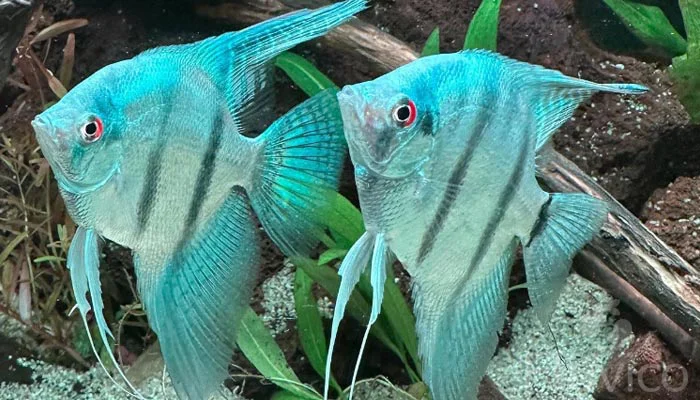
Colours, Patterns, Fins, and Sex Differences
Angelfish can come in an array of colours and patterns, with variations including silvers, golds, blacks, and marbles. These patterns can be stripes, spots, or blended hues, often acting as mood indicators or camouflage mechanisms. Their most distinctive features, the broad dorsal and anal fins, are reminiscent of angel wings.
These fins are not just for show; they assist in navigation through densely vegetated waters. Distinguishing between male and female angelfish can be challenging.
Typically, males possess a more angular body and a pronounced nuchal hump on the forehead. However, accurate sex differentiation is often possible only during breeding when the female exhibits a rounded breeding tube.
Selecting and Housing Angelfish
How Do You Pick Healthy Angelfish?
Choosing a healthy angelfish is paramount to ensure its longevity and ease of care. Here’s a guide to aid in your selection:
- Body Condition: A healthy angelfish should have a well-rounded, smooth body without any signs of injury or lesions.
- Active Behaviour: Look for fish that swim actively with erect fins. Lethargy or clamped fins might indicate health issues.
- Clear Eyes: Their eyes should be bright and clear. Cloudy or sunken eyes can be a sign of sickness.
- Uniform Colour: Although they have diverse patterns, their colour should be vibrant and consistent. Pale or patchy colour might suggest stress or disease.
- Inspect Fins: Fins should be intact without any signs of fraying, which can be indicative of fin rot or aggressive tank mates.
- Breathing: Their gills should move steadily. Rapid or laboured breathing can hint at water quality issues or potential diseases.
- Observe Interactions: Aggression or constant hiding may be a sign of stress or previous trauma.
- Check for Parasites: Ensure there are no white spots (indicative of Ich) or any unusual growths on the body.
- Ask the Seller: Inquire about the fish’s origin, its diet, and any recent health issues or treatments it might have undergone.
- Quarantine: Once purchased, it’s wise to quarantine the them for a couple of weeks before introducing it to the main tank. This helps in monitoring its health and ensuring it doesn’t introduce diseases to other fish.
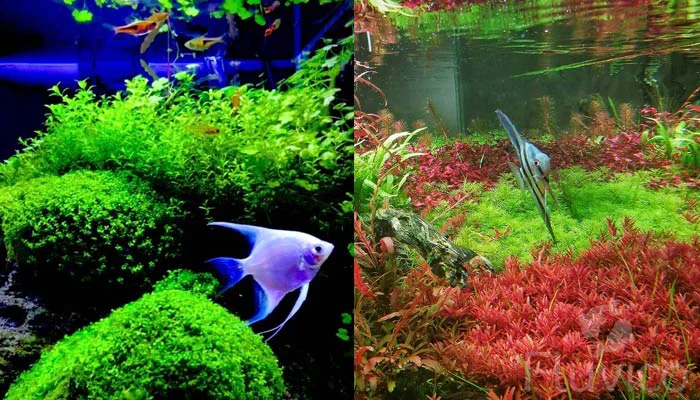
Aquarium Setup
Setting up an angelfish-friendly aquarium is crucial for their well-being and to mimic their natural habitat:
- Tank Size: Opt for a tank of at least 55 gallons for a pair when fully grown. Angelfish can grow quite large and need space to swim. Tall aquariums are best for their body shape.
- Dense Vegetation: Incorporate live plants like Amazon swords and java ferns, which offer hiding places and mimic their natural habitat.
- Filtered Water: Ensure a good quality filter is in place. Angelfish thrive in clean, well-oxygenated water.
- Subdued Lighting: They prefer dimmer conditions, resembling the shaded areas of their native freshwater basins.
- Substrate: Use fine sand or soft gravel which allows for easy cleaning and prevents injury.
Tank Conditions
Ensuring the right tank conditions is fundamental for the health and vitality of your angelfish:
- Temperature: Angelfish thrive in temperatures between 74-82°F (23-28°C). Using a reliable aquarium heater can help maintain a stable temperature.
- pH Levels: Aim for a pH level ranging from 6.5 to 7.5. Regularly test the water to ensure consistency.
- Water Hardness: Soft to moderate hardness, between 1-5 dGH, is ideal.
- Ammonia, Nitrite, and Nitrate Levels: These should be monitored closely. While ammonia and nitrite levels should always be zero, maintain nitrate levels as low as possible, ideally below 20 ppm.
- Aeration: An efficient air pump or powerhead ensures proper oxygen circulation, vital for angelfish well-being.
- Regular Water Changes: Replace 25% of the tank water every 2 weeks to remove waste and replenish essential minerals.
- Tank Lid: Angelfish are known jumpers. A secure lid is necessary to prevent any unfortunate escapes.

Compatible Plants and Décor for Angelfish Aquariums
Plants:
- Amazon Swords: Their broad leaves provide a natural shield and hiding space for angelfish.
- Java Fern: A hardy plant that attaches to rocks and driftwood, it adds vertical interest to the tank.
- Anubias: These can be tied to driftwood or stones, providing shelter and aesthetic appeal.
- Cryptocoryne: These are durable and add a lush, green backdrop.
- Vallisneria: These long, grass-like plants simulate the dense vegetation of angelfish habitats.
Decor:
- Driftwood: Besides offering a natural look, driftwood provides anchor points for certain plants and acts as shelter.
- Rocks & Caves: Slate or smooth river rocks can be used to create caves, giving angelfish places to hide and reducing their stress.
- Leaf Litter: Alder cones or Indian almond leaves can be added for a tannin-rich environment, replicating the blackwater habitats of the Amazon.
- Floating Plants: Duckweed or water lettuce can help dim the lighting, providing the subdued conditions angelfish prefer.
- Background: A darker, muted background can make angelfish feel more secure and highlight their vibrant colours.
Angelfish Care & Requirements
Diet and Feeding for Angelfish:
Providing a balanced diet for angelfish ensures their vibrant colours, robust health, and longevity. Here’s a comprehensive guide on their dietary needs and feeding habits:
- Flake and Pellet Food: High-quality angelfish-specific flakes or pellets should be the staple of their diet. These are formulated to provide essential nutrients and cater to their carnivorous nature.
- Live and Frozen Foods: To ensure a diversified diet, occasionally offer live or frozen foods like brine shrimp, bloodworms, and daphnia. These enhance their vitality and stimulate natural hunting behaviours.
- Vegetable Matter: Though primarily carnivorous, angelfish benefit from occasional vegetable intake. Offer blanched spinach, peas, or zucchini slices once in a while.
- Feeding Frequency: Angelfish should be fed 1-2 times daily. It’s crucial to offer only what they can consume within a few minutes to prevent overfeeding and maintain water quality.
- Vitamin Supplements: Consider occasionally adding liquid vitamins to their food or water. This ensures they receive all necessary nutrients, especially if their diet lacks variety.
- Observe Their Eating Habits: Monitoring how your angelfish feed can provide insights into their health. Lethargy or disinterest in food might indicate underlying health concerns.
By providing a varied and nutritionally balanced diet, you’ll ensure that your angelfish remain healthy, active, and display their brilliant colours to the fullest. 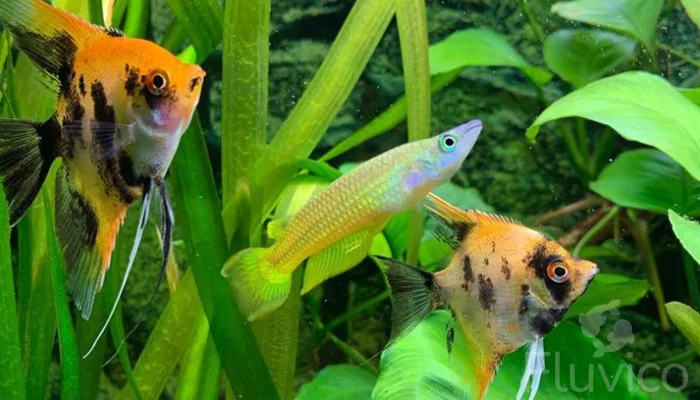
Tank Mates
Compatible Tank Mates:
- Corydoras Catfish: Peaceful bottom dwellers, they won’t intrude on the angelfish’s mid-to-upper-level territory.
- Rams (e.g., Bolivian or German Blue Ram): Being smaller cichlids, they’re generally peaceful and can coexist with angelfish.
- Tetras (e.g., Black Skirt, Rummy Nose): These schooling fish are active and usually stay out of the angelfish’s way.
- Dwarf Gouramis: With their calm nature, they can share the tank harmoniously.
- Plecos: Many varieties, especially the smaller ones like the bristlenose pleco, can coexist without issues.
- Rainbowfish: Their swift nature and peaceful temperament make them suitable companions.
Incompatible Tank Mates:
- Fin-nipping Species: Fish like tiger barbs or serpae tetras can be aggressive and might nip at the angelfish’s long fins.
- Other Cichlids: Larger and aggressive cichlids, like Oscars, can pose a threat.
- Small Shrimp and Snails: Mature angelfish might see them as food and snack on them.
- Guppies and other Small Fish: Might mistake smaller fish for food, especially if there’s a significant size difference.
- Bettas: Both species are territorial and can be aggressive towards each other, leading to potential conflicts.
When introducing any tank mate, always observe their interactions for the first few days to ensure compatibility. It’s also important to ensure the tank size is adequate for all its inhabitants, and territories are clearly defined with plants and decor.
Health Concerns and What to Watch for in Angelfish:
To keep your angelfish thriving, it’s essential to be aware of potential health concerns and detect early signs of illness.
- Ich (White Spot Disease): White spots on the body and fins, scratching against objects, lethargy.
- Fin Rot: Frayed or disintegrating fins, sometimes accompanied by a milky-white edge.
- Dropsy: Swollen or bloated body, scales sticking out, lethargy.
- Swim Bladder Disease: Difficulty swimming, floating upside down, or sinking.
- Hole-in-the-Head Disease: Small pits or holes on the fish’s head or along the lateral line.
General Indicators of Health Issues:
- Rapid or Laboured Breathing: Might suggest respiratory distress or poor water quality.
- Loss of Appetite: If the fish refuses food, it might be an early indicator of stress or illness.
- Changes in Color: Drastic or sudden colour changes can be a sign of stress or disease.
- Abnormal Swimming Patterns: This includes erratic movements or constant hiding.
- Visible Parasites: Like worms or anchor worms attached to the fish.
Preventative Measures:
- Regular Water Testing: Ensure levels of ammonia, nitrites, nitrates, and pH are within safe ranges.
- Quarantine New Fish: Always quarantine newcomers for 2-3 weeks before introducing them to the main tank.
- Clean Diet: Offer a varied, high-quality diet and avoid overfeeding.
- Routine Tank Maintenance: Perform regular water changes and clean the substrate and decorations.
Early detection and intervention are critical. If you’re uncertain about a health issue, it’s always a good idea to consult with an aquarium specialist or veterinarian familiar with fish diseases. 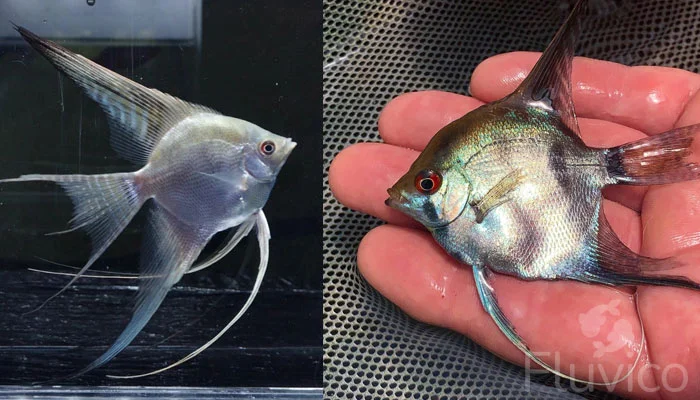
Breeding Angelfish
Overall Time for Breeding: 5-7 months
1. Selecting a Pair:
Choose a healthy pair of angelfish. In most cases, angelfish will pair off naturally when they are ready to breed.
2. Setting up the Breeding Tank:
Use a 20-30 gallon tank.
Provide a pH level of 6.5-7.2.
Maintain water temperature between 78-80°F (25.5-26.5°C).
3. Create the Right Environment:
Insert vertical flat surfaces like slate or broad leaves, which act as spawning sites.
Ensure good water filtration without creating a strong current.
4. Diet for Conditioning:
For about a week, feed the fish a high-quality diet, including live or frozen foods like brine shrimp or bloodworms to get them in prime breeding condition.
5. Spawning:
Once the environment and diet are right, the female will lay hundreds of eggs on the chosen spawning site. The male will follow behind to fertilize them.
6. Monitoring the Eggs:
The parent angelfish will fan the eggs with their fins to ensure they get adequate oxygen. Remove any unfertilized (white) eggs to prevent fungal growth.
7. Hatching:
After 48-72 hours, the eggs will hatch, producing wrigglers. They’ll attach to the spawning site and remain there until they begin free-swimming, usually after another 5-7 days.
8. Feeding the Fry:
Once free-swimming, feed the fry with infusoria or specially formulated fry food. After a week, you can introduce newly hatched brine shrimp.
9. Separating the Fry:
As the fry grow and become more active, it’s essential to separate them into a larger grow-out tank to ensure adequate space and reduce competition for food.

Should You Get an Angelfish for Your Aquarium?
Pros:
- Aesthetic Appeal: Their distinct appearance with tall, elegant fins makes them a centrepiece in any tank.
- Behavioural Interest: They are active swimmers, and their curious nature can be captivating to observe.
- Variety: Available in various colours and patterns, they offer a lot of choices for aquarists.
- Relatively Hardy: With proper care, angelfish can be resilient and adapt well to life in captivity.
Cons to Consider:
- Tank Size: They require a larger tank, ideally starting at 30 gallons for a pair, due to their potential size and territorial needs.
- Aggression: During breeding or in cramped spaces, they can become territorial and aggressive.
- Specific Needs: Angelfish have particular water conditions, dietary, and tank setup requirements.
- Health Concerns: While generally hardy, they are susceptible to specific diseases if not cared for properly.
Things to Ponder:
- Commitment Level: Are you prepared for the responsibility of meeting their care requirements over their lifespan, which can extend up to 10 years with proper care?
- Tank Compatibility: Do you have or plan to have other fish species? Ensuring compatibility is crucial.
- Maintenance: Are you comfortable with regular water changes, water testing, and providing a varied diet?
In conclusion, while angelfish can be an enticing addition to an aquarium, they’re not suited for everyone, particularly beginners or those looking for low-maintenance fish. Thorough research and preparation are key to making an informed decision. If their care requirements align with your capacity and interest, they can be a rewarding and graceful presence in your aquatic haven.
FAQ
Can Angelfish live with other fish?
Yes, they can coexist with other medium to large non-aggressive fish, but compatibility varies. Avoid small fish, as they might become prey, and overly active species that may stress angelfish. Always research specific tank mates.
How many Angelfish should be kept together?
Angelfish are social and prefer groups. Ideally, keep them in groups of 6 or more to distribute aggression and ensure a natural hierarchy. Ensure ample tank space to accommodate their adult size.
Are Angel fish high maintenance?
Angelfish require moderate care. While they’re not the most demanding, maintaining proper water conditions, diet, and monitoring for diseases are crucial for their well-being. Experience in fish-keeping can be advantageous.
Can Angelfish live with guppies?
Angelfish and guppies can coexist, but it’s risky. Adult angelfish might see small guppies as food. If choosing to combine them, ensure ample hiding spots for guppies and monitor closely to avoid potential predation.
Why is my Angelfish twitching?
Angelfish twitching, similar to betta fish flaring their gills, is often a sign of dominance or arousal towards other fish, especially fellow angels. It’s a natural display of hierarchy and territory assertion.
More Reading

15 Types of Cryptocoryne: Which is Best For Your Aquarium Setup?

16 Awesome Low Light Aquarium Plants (Mosses, Ferns & Stem Plants)


18 Types of Aquarium Moss: Photos, Care, Propagation & Growth Guide
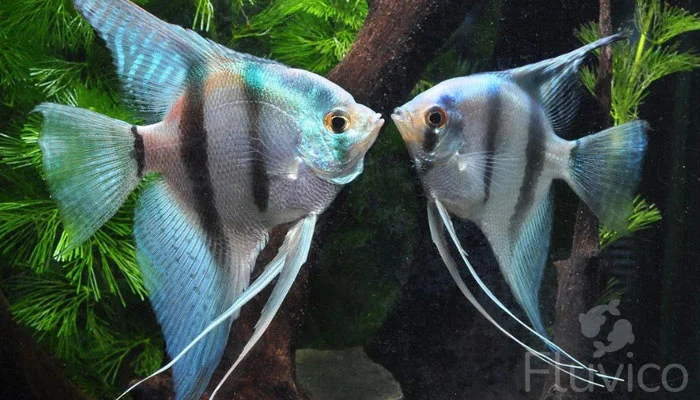

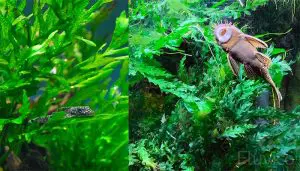

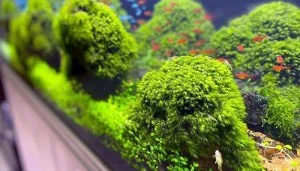
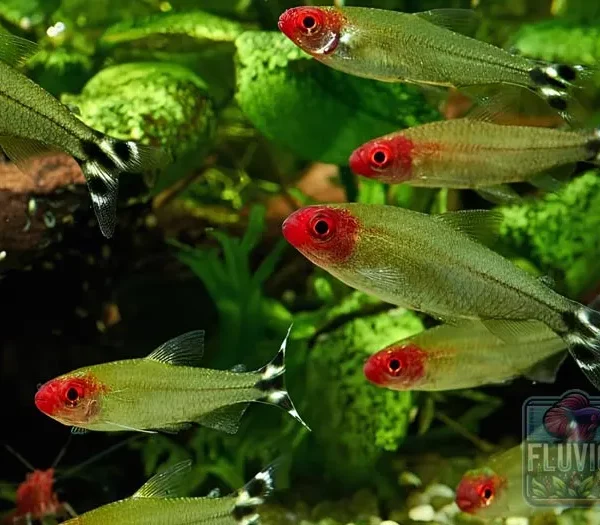
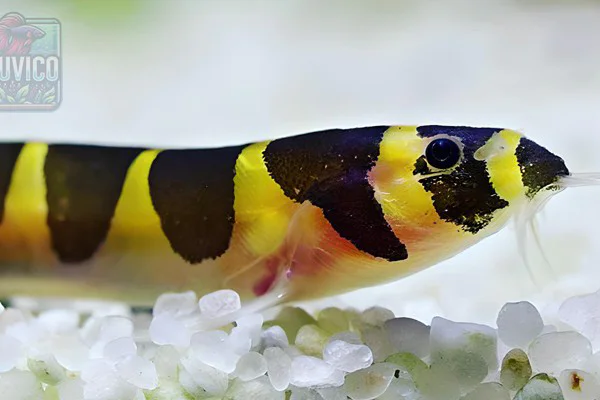
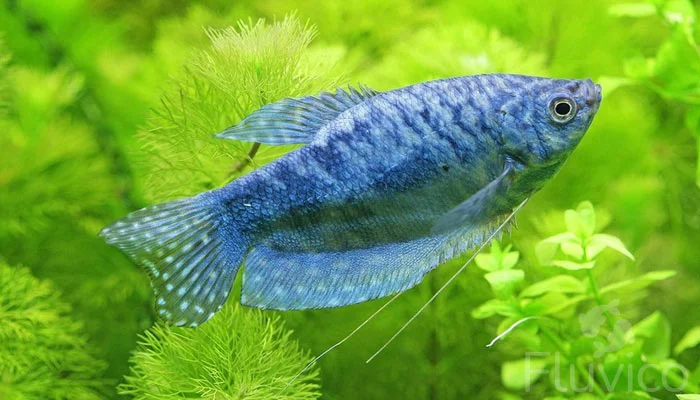

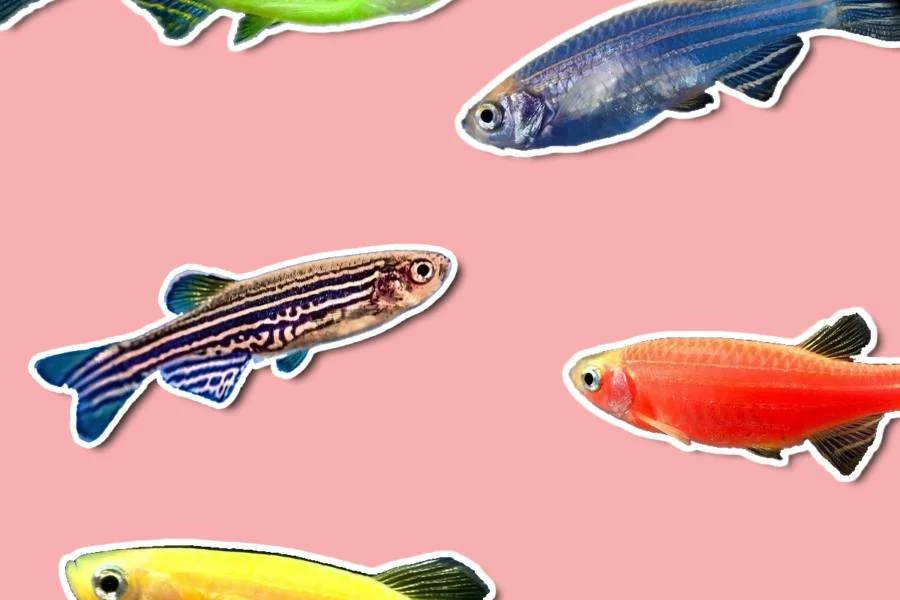

Hope you enjoyed our Angelfish Care Guide!
If you have any questions? Ask away, we’re here to help!
All the best,
Daniel